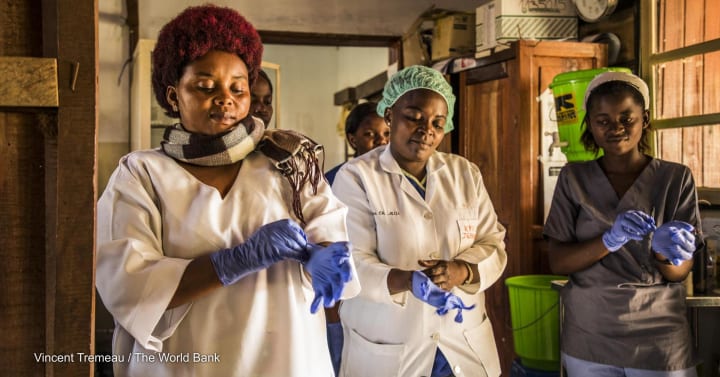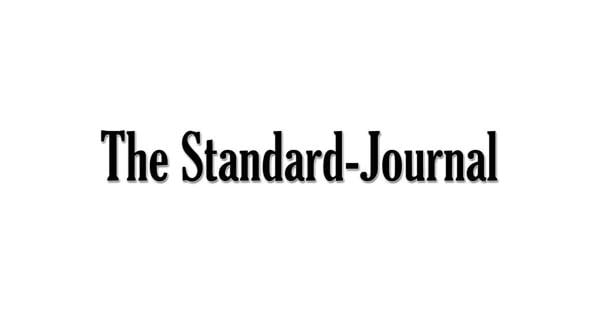
Five years after the COVID-19 pandemic exposed the fragility of global health systems, the world remains dangerously underprepared for the next pandemic. Despite the devastating human, economic, and social toll, significant gaps remain in global pandemic prevention, preparedness, and response, or PPR, capacities.
The urgent need to address chronic under-investments in PPR led to the formation of the Pandemic Fund, the first multilateral financing mechanism to focus solely on strengthening PPR. Since its launch in September 2022, the fund has moved rapidly to fill critical investment shortfalls.
“We've already mobilized almost $3 billion in initial funding from 28 contributors, and we've moved forward quickly to deliver two rounds of financing through 47 projects that cover 75 countries across six geographies,” said Priya Basu, executive head of the Pandemic Fund.
As global health leaders gather in Geneva for the 78th World Health Assembly, or WHA, momentum is building around the potential adoption of the Pandemic Agreement — and with it, a renewed push for more coordinated, coherent, and sustained investments in pandemic preparedness.
Speaking to Devex, Basu explains how the fund’s unique design helps build more resilient systems to better protect the world from future outbreaks and what she hopes to convey to the global health community at WHA78.
This conversation has been edited for length and clarity.
The Pandemic Fund’s establishment was one of the most significant global achievements that emerged from the lessons of COVID-19. Thanks to the vision and leadership of the G20 [Group of 20 leading economies], the Pandemic Fund was formally launched under Indonesia’s G20 presidency in November 2022. The fund is the first and only multilateral financing mechanism dedicated exclusively to strengthening pandemic PPR capacities in low- and middle-income countries, ensuring that countries have the capacity to detect and contain infectious disease outbreaks and prevent the next pandemic. It truly offers the promise of building a healthier and safer future for all.
The fund has already mobilized almost $3 billion in initial funding from 28 contributors and moved forward quickly to deliver two rounds of financing through 47 projects that cover 75 countries across six world regions, with every dollar of funding awarded mobilizing an additional $7 from international sources and recipient countries themselves. Some 43% of our funding is allocated to Africa, where we're seeing the greatest needs and demands. The fund is working on building national as well as cross-country and regional PPR capacities. Because, ultimately, viruses don’t respect borders.
Too often, pandemic PPR investments are seen as a standalone agenda. They’re not. Investing in PPR builds foundational capacity that’s critical to stronger and more resilient health systems that can deal with multiple health threats. That’s what the Pandemic Fund has shown through its early investments.
The fund prioritizes investments in three areas: surveillance, laboratories, and the health workforce, taking a “disease agnostic” approach. For example, enhancing diagnostics at the point of care is critical to early detection of diseases. In the workforce, we’re training doctors, nurses, community health workers, field epidemiologists, and technicians so they’re better equipped to deliver day-to-day services essential to detecting and preventing outbreaks from spreading. Though these investments are made during “peacetime,” they also focus on building surge capacity needed for times of crisis — for example, building testing capacity that can be quickly ramped up and a workforce that can be rapidly deployed when needed. These investments are not parallel tracks — they are mutually reinforcing.
First, we are a catalytic fund. Every dollar in grants is used to mobilize additional financing from both international and domestic sources. So far, with the $885 million awarded in grants, we have mobilized over $6 billion from international partners, including multilateral development banks, as well as from the countries themselves; that’s a 1:7 leverage ratio. The governments of the countries where we are investing funds are coming forward with their own domestic resources.
Second, by design, we are galvanizing coordination and collaboration across partners and actors at many levels. To avoid duplicating what others are doing, our funding is channeled through existing international institutions engaged in global health. We draw on their comparative strengths in implementation and, importantly, pull them into partnerships with one another around country-led plans. Most of the projects we’re supporting take an all-of-government, all-of-society approach, bringing together different arms of government, communities, and civil society organizations in design and implementation.
Given that most infectious disease outbreaks with pandemic potential are zoonotic in origin [transmitted from animals to humans], the projects we are supporting are helping to operationalize One Health approaches that recognize the nexus between animal health, human health, and the environment and encourage multi-sectoral collaboration.
Third, we are agile. We demonstrated this through the $129 million in support that we provided last year to 10 countries in response to the mpox outbreak in Africa within five weeks of the outbreak being declared as a public health emergency by the Africa CDC and the WHO. Through these projects, in Rwanda, for example, we supported the training of some 3,000 health workers and 30,000 community health workers in surveillance and laboratory systems; these skills came into use not only for mpox but also during the Marburg outbreak.
Fourth, our governance is inclusive, with balanced representation of contributors and co-investors (countries that are eligible to receive funds), and the participation of civil society.
And fifth, because our operating model relies on the implementation expertise of existing institutions, we are cost-efficient. To date, our annual operating costs have been less than 0.5% of the funds received. These key principles underpinning the Pandemic Fund are firmly embodied in the projects we are supporting across 75 countries.
Resources devoted to strengthening pandemic PPR must be seen not as an expense, but as an investment. They are key to building a safer, more secure, and prosperous world. The returns are high. Moreover, what COVID and past pandemics have clearly demonstrated is that the costs of being unprepared are massive. Let’s not forget that COVID cost millions of lives, trillions in economic losses, and set back years of progress in health, poverty reduction, and growth in the most vulnerable countries. In comparison, the investments needed to get all countries to the right level of preparedness are modest.
Thirdly, factors like conflict, fragility, and migration are driving pandemic risks as evidenced by the recent increase in the frequency, severity, and scale of infectious disease outbreaks. In the past few months alone, we have seen outbreaks of mpox, Marburg, Ebola, cholera, dengue, and H5N1, to name a few. This underscores the urgency of getting better prepared.
The potential adoption of a pandemic agreement offers renewed momentum and is a blueprint for global collective action. But the agreement will take time to go into effect. Meanwhile, preparedness cannot wait. The risk of another pandemic occurring is not a question of if, but when. I think a key message is the need to move forward with urgency and determination to scale up investments in building resilient health systems that have the capacity to detect outbreaks and contain pandemics.
We will be showcasing progress and early results from the Pandemic Fund’s projects with a focus on country-led solutions and cross-border collaboration at our high-level event on the sidelines of the WHA.












